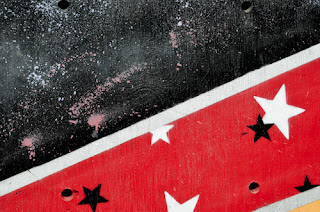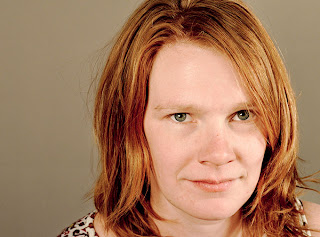Friday, May 3, 2013
Tuesday, April 30, 2013
Artist 10
Anarchy (Battle of the Monkeys), 2011
Anarchy (Celebrity), 2011
Anarchy (Oedipus) 2011
Andres Serrano
Anarchy Series
I chose to focus on Andres Serrano series Anarchy. I like Serrano's use of silhouetted figures in this series and the use of lighter colored background to pull them off. The subject matter to me seems rehashed or cliché. I feel as it offers nothing new as we have seen these expression before. Celebrity feel almost like a stock conception photo. Oedipus seems like a ripoff of Charles Ray's women in fall 91 which are giant sized women and drives the point home in much more effective way.
Monday, April 22, 2013
Artist 9
Diane Arbus
Diane Arbus started out working for her husband, Allan Arbus, in fashion photography. She branched out and started taking photos of people while wandering the streets of New York in the 1960s. These images captured the eccentric, raw nature of some of the cities inhabitant. She visited seedy hotels, public parks, and other various locals. Her images have a psychological narrative to them. I think one must look at the subtleties of the shots and ask further questions about the subjects. For example in the top twins shot, notice how the one twin has a slight smile and the other twin as a slight frown, perhaps alluding to aspects of the human condition as the classic theater image does. There seems to be a "freak show' quality to her shots, but in my opinion they are best when they are not over the top. I think it is important to understand the image in realtion to the time period. Entering the 1960s, American culture was very controlled, not allowing for much variation in lifestyle. Daine Arbus made an existential choice and decided to end her life in 1971.
Tuesday, April 16, 2013
Personal Project 3
Artist Statement
I’m interested in what is not easily seen. I find reality is often a slave to perception. In other words our perception and what we believe, dictates our reality. Therefore, what is on the inside of an individual is vitally important to what happens externally. I did three series of three that explore and experiment with this idea.
You are You
In this series on the top, I wish to explore portraits of individuals in a different way. I’m want to focus more on what is going on inside of an individual than the surface. Using doodles, expressions and the outline of the person. I give you Jake, Danny, and Sage.
Three Dimensions of Thought
In this series iI’m playing off a standard advertising motif. Words often are used in conjunction with an image to create and brand impression in ones mind. I want to reveal the structure of how the mind associates values, thereby illuminating the structure of thought according to the science of Formal Axiology.
This series is an imagined take on existing in an unseen field. How does thought and intention connect. I started with a scanned image of an Asada head, used for drawing practice, and painted over it. The idea first came to me back when I did theater. I had an experience where my mind started to visualize the connection to my scene and the audience partners. We live in a quantum web of field.
You’re in the Soup
This series is an imagined take on existing in an unseen field. How does thought and intention connect. I started with a scanned image of an Asada head, used for drawing practice, and painted over it. The idea first came to me back when I did theater. I had an experience where my mind started to visualize the connection to my scene and the audience partners. We live in a quantum web of field.
Thursday, April 4, 2013
Artist 8
Lori Nix
Lori Nix is an artist who create Dioramas and then photographs them. Dioramas are miniature environments made in a box, carrying case, window act. Not only is her model building impressive as hell, but her lighting as well. Her Tinny worlds are "lived in", almost apocalyptic which tend to sell the reality more. As a kid i built models and and had miniature train sets, so i'm easily impressed by miniaturizing objects and creating an entire environment.
Tuesday, April 2, 2013
Readings 3
The End of Fripo In The World
Interesting if not sad story of the death of a a 10/11 year old boy. The voice in the piece is scattered, yet pleasantly so. We are inside Cory's head as he surveys his bike ride and he give us a commentary of the events, places, and people in his home and neighborhood until he is struck by a car. He gives us descriptive and personal accounts of his life tied into popular media culture and his own imaginative symbology which helps us to see his viewpoint, kind in a kind of channel surfing way. I think he captures that age well as the imagination and real life seems to merge in a boys life.
Yesterday's Sandwich
Very good piece about Mikhailov process in assembling his "montage" photos. I like how he builds the element of "chance" into his work. The process then becomes more of a journey than a goal. I like how he compared the different culture coding that goes into the thought process of making work and how Soviet aesthetic contain a duality of meaning. I really liked the story about his friend, the photographer Vitas Luckus. Luckas killed a guy who told him his work was "shit". He then jumped to his won death after he realized what he had done. Don't ever accuse the Russian people for not being passionate:-)
Interesting if not sad story of the death of a a 10/11 year old boy. The voice in the piece is scattered, yet pleasantly so. We are inside Cory's head as he surveys his bike ride and he give us a commentary of the events, places, and people in his home and neighborhood until he is struck by a car. He gives us descriptive and personal accounts of his life tied into popular media culture and his own imaginative symbology which helps us to see his viewpoint, kind in a kind of channel surfing way. I think he captures that age well as the imagination and real life seems to merge in a boys life.
Yesterday's Sandwich
Very good piece about Mikhailov process in assembling his "montage" photos. I like how he builds the element of "chance" into his work. The process then becomes more of a journey than a goal. I like how he compared the different culture coding that goes into the thought process of making work and how Soviet aesthetic contain a duality of meaning. I really liked the story about his friend, the photographer Vitas Luckus. Luckas killed a guy who told him his work was "shit". He then jumped to his won death after he realized what he had done. Don't ever accuse the Russian people for not being passionate:-)
Thursday, March 28, 2013
Artist 7
USA. San Francisco, California. 2000
Coming and Going. USA. San Francisco. 1998. Photogram with drawing.
USA. San Francisco, California. 2003. Dave CHAPPELLE at the Punch Line comedy club.
Jim Goldberg
While sifting thru the work of Jim Goldberg, I first resinated with the top photo (the two girls and guy in the elevator in San Francisco). I was living in San Francisco at the time he took this and it captured some memories of when I first arrived there. I stayed at a number of residence hotels while starting my career. These are cheap (one bathroom on the floor, not in your room) places to stay while pounding the streets with a resume. All types people stay at these places, an eclectic mix of characters. From unhinged dreamers who haven't found their american dream, to young golden eyed hipsters desperately trying to lasso the midnight sun. I think Goldberg captured the latter perfectly in this photo.
Looking thru his work further, i noticed he really can't be categorized into a district style. He does famous portraiture. He does photograms with text, as well as object collage. He likes to experiment, yet there's a strong photojournalist vein in his work. What i like, is that he seems to go to the underbelly of culture, or at least western culture. He bring us into cultural places many haven't experienced and somehow frames it away from our own pre-judged viewpoint. He brings us to a deeply human realm with fresh eyes, and for this, I think of him as an Artist.
Thursday, March 21, 2013
Artist 6
Laszlo Moholy-Nagy
Laszlo Moholy-Nagy appealed to me for a number of reasons. Formost, He was cutting edge for his time in the realm of art, design and photography due to his experimental methods. Russian Constructivism, Moholy-Nagy’s primary leaning, was a political and artistic movement influenced by the 19th century’s industrial revolution. Among its main principals was the belief that art should use industrial machinery. Coming out of Bauhaus, which believed that design could help serve humanity in forging a new world, utopian indeed. In 1937, Moholy-Nagy was invited by Walter Paeckpe to open the New Bauhaus school in Chicago. The school operated for just one year and was shut down due to a lack of funding, but Paeckpe stuck with Moholy-Nagy, who in 1939 established the School of Design, renamed the Institute of Design in 1944, one of the world’s most important design education institutions. Moholy-Nagy passed away in Chicago in 1946. His work is original and even holds it's freshness in out contemporary times.
Friday, March 8, 2013
Thursday, February 28, 2013
Artist 5
Hiroshi Sugimoto. “Lightning Fields”
I've always loved photography that takes us to the micro or macro world of natural
phenomena. Sugimoto's lighting field stops time and shows us the micro world of static electricity.
To create each image, Hiroshi Sugimoto uses a Van De Graaff 400,000-volt generator to apply electrical charge directly onto film. The result in each case is a unique, instantaneous image of an
electrical current.
Monday, February 25, 2013
Subscribe to:
Comments (Atom)












.jpg)











































